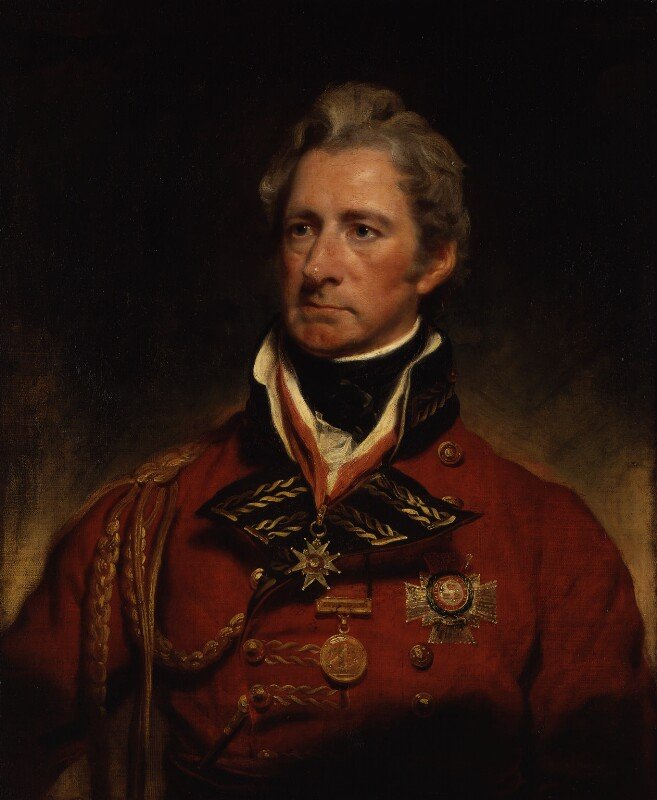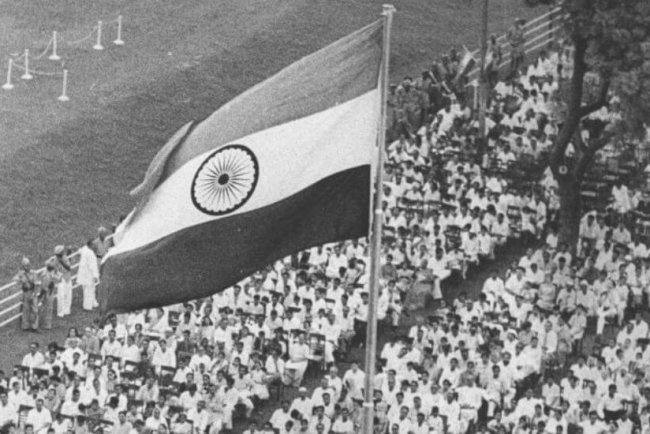Land Revenue Policies of the British in India
The article explores the British colonial land revenue policies in India, focusing on the introduction and implications of the Zamindari, Ryotwari, and Mahalwari systems. These policies aimed to maximize revenue collection, often at the expense of Indian farmers' welfare. The Zamindari system granted permanent land ownership to landlords, fostering economic growth for them but leading to farmer exploitation and social corruption. The Ryotwari system sought to empower farmers through direct settlements but faced challenges due to high revenue demands. The Mahalwari system involved community-based revenue settlements, concentrating power among local chiefs. Overall, these policies disrupted traditional agricultural practices, contributed to widespread poverty, and left a lasting legacy on Indian society and agriculture.

Traditional Land System
The traditional land system that was in place in India before the arrival of the British in India was that the farmers had the right over the land and a part of the crop was given to the government. In 1765, through the Treaty of Allahabad, the East India Company acquired the Diwani of Bengal, Bihar and Orissa. Although the East India Company continued the old land revenue system prevalent in India till 1771, the company increased the rates of land revenue. Gradually, the company's expenses started increasing, to compensate for which the company increased the rates of land revenue. It was also natural to do so because land revenue was the only medium through which the company could get more and more money.
The East India Company started interfering in the agricultural system of India with the aim of meeting its economic expenses and earning more and more money and tried to end the traditional structure of agriculture. Although no major change was made in the land revenue system till the time of Clive and his successors and till this time the land revenue was collected through middlemen (landlords or rent contractors), but after that the company started new types of agricultural relations. As a result, the company established many new types of land revenue arrangements for the determination and collection of taxes. ‘Mainly the British adopted three types of land tenure systems in India-
Land Tenure Systems Adopted by the British
- Zamindari System: Implemented in Bengal, Bihar, Orissa, Banaras, and northern Karnataka.
- Ryotwari System: Implemented in Madras, Bombay, and parts of Assam.
- Mahalwari System: Implemented in Central Province, U.P., and Punjab.
Although initially (in 1772) Warren Hastings had also started the Ijaradari system, but this system did not last long and only these three land revenue systems remained effective during the British rule. Ijaradari system was mainly implemented in Bengal.
The Zamindari or Permanent Settlement system implemented thereafter was implemented in Bengal, Bihar, Orissa, Banaras of Uttar Pradesh and northern parts of Karnataka. Ryotwari system was implemented in Madras, Bombay and some parts of Assam. While Mahalwari system was implemented in Central Province, U.P. and Punjab. The description of these different land revenue systems is as follows-
Ijaredari System

In 1772, Warren Hastings implemented a new land revenue system, which is known as ‘Ijaredari System’. The main objective of adopting this system was to collect more land revenue. This system had two main features
1. It had a five-year contract system; and
2. The land was given on contract to the highest bidder.
But the company did not benefit much from this system because this system caused instability in its recovery. Due to this defect of the five-year contract, it was changed in 1777 AD and the period of the contract was made one year. That is, now the contract for the collection of land revenue started being made every year. But this system of every year contract was unsuccessful. Because due to this the rate of land revenue and the amount of collection started changing every year. This made the company uncertain about how much rent it would collect the next year. Another drawback of this system was that every year new people would take contracts and collect more and more land revenue from the farmers. Since the lessees (contractors or landlords) had temporary ownership of the land, they did not take any interest in land reforms. Their main objective was to collect more and more rent. For this they also harassed the farmers. These lessees did not even give the full amount of collection to the company. Due to this system, there was a lot of burden on the farmers and they started becoming poor.
Although this system was quite flawed, yet it increased the income of the company.
Permanent Settlement

The revenue system of Bengal has been a problem for the company since 1765. Clive did not make any significant changes in this system and the annual revenue system continued during his time. Later Warren Hastings introduced the monopoly system to improve the revenue system but instead of solving the problem, it got more complicated. Due to the faulty provisions of this system, farmers started getting ruined and agriculture started to decline.
_When Lord Cornwallis came to India as Governor-General in 1886, the company's revenue system was in disarray and there was a lot of debate going on about it. Therefore, the most important task before him was to improve the company's revenue system. Due to the instability in revenue collection and other defects caused by the system of annual contract, the directors of the company ordered Cornwallis to first of all improve the revenue system and enter into a permanent agreement with the landlords to remove the defects arising from the system of annual contract. This order of the Directors ultimately became the main reason for the permanent settlement system. As a result, the system made in relation to land revenue or rent is known as the ‘Zamindari system’ or ‘Permanent settlement system’.
Although initially there were some problems related to this system. Like
(i) With whom should the agreement be made? With the farmer or the landlord.
(ii) How much part of the production should the state receive as rent. And.
(iii) Should this agreement be made for a few years or permanently.
Initially there were strong differences between John Shore, Charles Grant and Cornwallis himself regarding these problems. Therefore, these problems were given adequate and complete consideration. Finally, with the mutual consent of Prime Minister Pitt, Chairman of Board of Control Dundas, Director of the Company, John Shar, Charles Grant and Cornwallis, an agreement was made with the landlords for 10 years in 1790, which was made permanent on 22 March 1793.
This system was implemented in Bengal, Bihar, Orissa, Benares block of U.P. and North Karnataka. About 19 percent of the total area of British India was included under this system. Features: Its features were as follows:
(i) The landlords were made permanent owners of the land. Their right over the land was hereditary and transferable. They could not be separated from their land as long as they continued to pay their fixed rent to the government.
(ii) The farmers were given the lower status of mere raiyats and their land related and other traditional rights were taken away. (iii) The landlords, being the owners of the land, could buy or sell the land.
(iv) The zamindar could give his land to his legal heir during his lifetime or by will.
(v) The rent from the zamindars was fixed forever. (vi) The government had no direct contact with the farmers.
(vii) The zamindars had to give 10/11th of the total amount of land revenue collected from the farmers to the company and keep 1/11th for themselves.
(viii) If the zamindars collected more than the fixed amount, they were given the right to keep it.
(ix) If a zamindar did not deposit the fixed amount of land revenue by the fixed date, his land was auctioned.
(x) The company's income increased significantly.
Objective:
The company had two main objectives of implementing the permanent settlement system of land revenue.
1. To create a class of zamindars in India, like England, which could serve as a social base for the British Empire. In view of the company's expanding empire in India, the British realized that to maintain control over a vast country like India, they should have a class that can provide a social base to the British rule. That is why the British created a class of landlords who would be satisfied with a small share of the company's loot and provide a social base to the company.
2. To increase the company's income. Since land revenue was the company's most important source of income, the company wanted to earn more revenue.
Advantages and Disadvantages of Permanent Settlement System:
Historians have expressed different opinions regarding the Permanent Settlement System. Some historians have considered it a courageous and intelligent act, while some have expressed strong views against it.
Comparatively, the advantages and disadvantages of this system were as follows:
Advantages:
Landlords-
1. The landlords benefited the most from this system. They became permanent owners of the land.
2. After paying a fixed amount of rent to the government, the landlords started receiving a large amount of money.
3. With more income, the landlords became very rich over time and they started living a comfortable life. Many landlords left the villages and settled in the cities.
Government:
1. In the form of landlords, the government got such a class, which was ready to support the government in every situation. This class of landlords provided social base to the British rule and on many occasions helped the government in suppressing the rebellions against the British government. Later, these landlords formed many organizations (like Land Owner Association, Land Holders Association etc.) and declared their unwavering loyalty towards the government in the national freedom struggle.
2. The income of the government increased a lot.
3. The income of the government became fixed, which made it easy for it to prepare its budget.
4. The government got rid of the hassle of fixing the rates of revenue every year and giving contracts.
5. The employees of the company got rid of the rent system, so that they could pay more attention to the business of the company. Its administrative expenses also decreased and administrative efficiency increased.
Other:
1. Due to the possibilities of increase in revenue, the landlords started taking permanent interest in agriculture and made many efforts to increase agricultural production. This increased agricultural production.
2. Due to progress in agriculture, trade and industry progressed.
3. The responsibility of establishing justice and peace was taken away from the landlords, due to which their attention was mainly focused on the development of agriculture and this increased the economic prosperity of the provinces.
4. The government benefited from the economic prosperity of the provinces.
Disadvantages:
1. The farmers suffered the most from this system. Due to this, their land related and other traditional rights were taken away and they were reduced to mere agricultural labourers.
2. The farmers had to face the atrocities and exploitation of the landlords and they became completely dependent on the mercy of the landlords.
3. Those landlords, who were liberal in the collection of revenue, could not pay the high rates of land revenue to the government on time, were ruthlessly evicted and their estates were auctioned.
4. As the landlords became prosperous, they started leading a luxurious life, which increased social corruption.
5. The permanent settlement system also harmed the national freedom struggle over time. This class of landlords remained loyal to the British in the freedom struggle and on many occasions it even helped the government against the nationalists.
6. Due to this system, the farmers became poorer day by day and their discontent against the government and the landlords started increasing. This discontent also contributed to some of the peasant movements that took place over time. Thus this system played an indirect role in preparing the background for some peasant movements.
Thus it is clear that the landlords benefited the most from the permanent settlement. Although the income of the government also increased, but from other points of view, it caused more harm than benefit. Apart from this, the entire benefit could have been obtained by a settlement of 15-20 years or a little more and there was no need to make this settlement permanent.
Thus the permanent settlement system may have been beneficial for some time but no long-term benefit was obtained from it. That is why the British did not implement this system in other parts of India except some places. After independence, this system was abolished from all places.
Ryotwari System

After the Permanent Settlement, the British government adopted a new system of land revenue. Which is called the Ryotwari Settlement.
Started in 1820 by Thomas Munro, the then Governor of Madras (1820-27),
This system was implemented in Madras, Bombay and some parts of Assam. Elphinstone, the then Governor of Bombay (1819-27), made a significant contribution in implementing this system in Bombay.
In this system of land revenue, the government made direct settlement with the raiyats i.e. farmers. Now the raiyats were given the ownership and possession rights of the land and they were directly or personally responsible for paying rent to the government. This system established the land ownership of the farmers. In this system, farmers were made the owners of the land instead of the landlords. Under this system, separate agreements were made with the peasants and the land revenue was determined on the basis of the area of the land and not on the amount of actual produce.
Mahalwari System
During the period of Lord Hastings, the British government implemented a modified form of land revenue system for the collection of land revenue, which was called Mahalwari settlement. This system was implemented in Central Province, U.P. (Agra) and Punjab and 30 percent of the land came under this system.
In this system, the land revenue was settled in a separate village or Mahal with the landlords or those chiefs who collectively claimed to be the head of the entire village or Mahal. Although theoretically the land was considered to be of the entire village or Mahal, but in practice the farmers divided the land of Mahal among themselves and deposited the rent with the head of the Mahal. Thereafter, these Mahal-Pramukhs deposited the rent with the government. The Mukhiya or Mahal Pramukh had the right to evict the farmer who did not pay the rent from his land. In this system, the rent was determined on the basis of the production of the Mahal or the entire village.
The most important drawback of the Mahalwari settlement was that it made the chief or head of the Mahal very powerful. His power increased a lot due to the right to evict the farmers from the land and sometimes the chiefs started misusing this right. The second drawback of this system was that it completely ended the direct relationship between the government and the farmers.
Thus, the British adopted different methods of collecting land revenue in India. These methods were implemented in different areas at different times. But the main objective of the British behind all these efforts was to increase their income by usurping as much land revenue as possible and they had no concern with the welfare of the farmers. Due to this, the Indian peasant class gradually started becoming poor and Indian agriculture was ruined.
What's Your Reaction?















